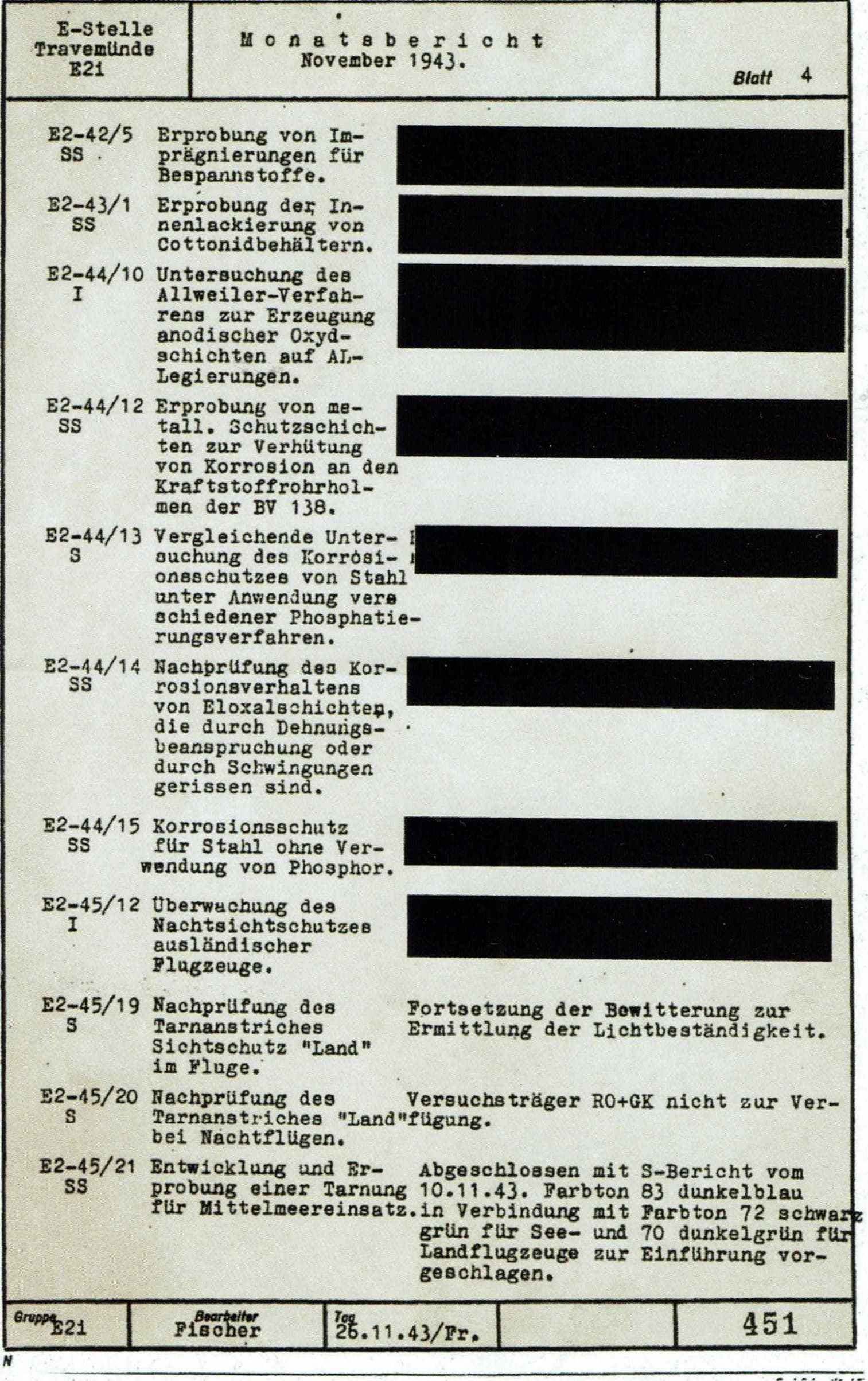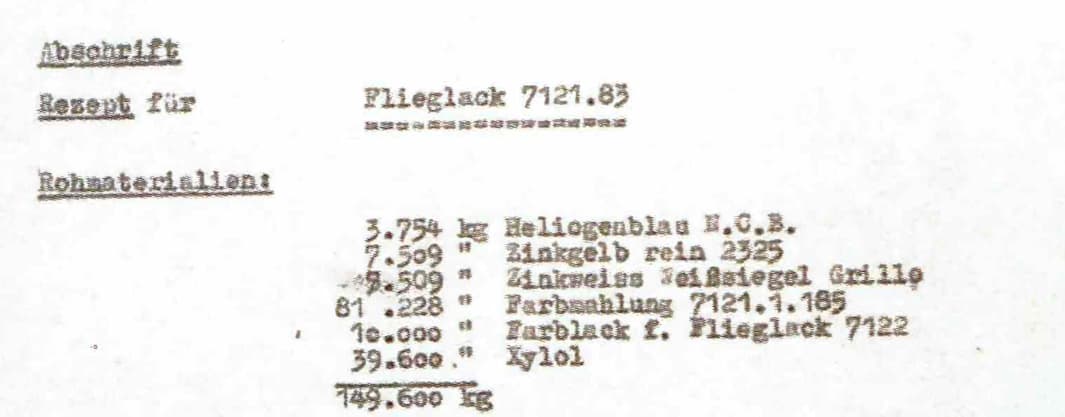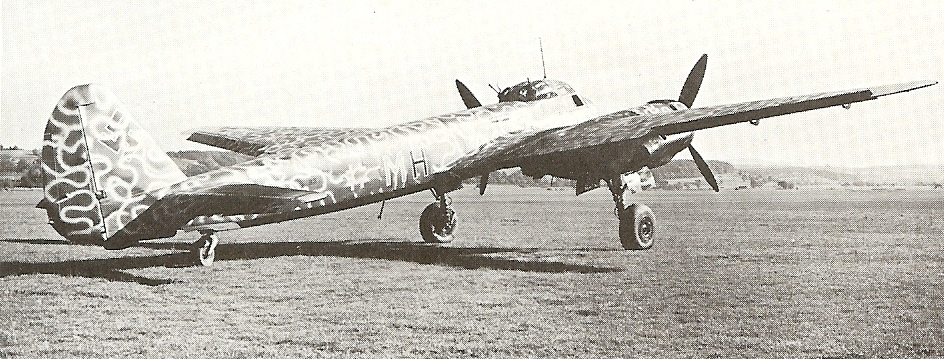RLM 83 is a curious paint, and probably one of the best examples of a Woozle in WW2 Camouflage history. The Woozle-effect, is in research when a fact is on the surface widely sourced, but when you dig deeper you cannot find the actual origin. It just gets parroted around so much it “becomes true”, at leas academically.
This is the case with RLM 83. Historically, a lot of sources, even reputable ones, depict this as green. It made sense, there were a wide variety of green colours, and that RLM 83 existed was known, however official documentation of the time didn’t specify the shade. Combine these two facts, and RLM 83 became one of these unidentified green colours. However, this isn’t actually the case with RLM being a deep blue colour.
| RLM 83 |
Ullman and the E-Stelle Travermünde
It was likely Michael Ullman who first found actual documents which identified RLM as a blue colour. He re-published a monthly report of E-stelle Travermünde (Erprobungsstelle Travermünde, the testing site in Travermünde), issue E21, dating November 26, 1943. The rapport refers to the development of a new camouflage for the Mediterranean.

The bottom of the page, section E-2-45/21 SS, reads as follows:
Entwicklund und Erprobung einer Tarnung für Mittelmeereinsats.
Abgeschlossen mit S-Bericht vom 10.11.43. Farbton 83 dunkelblau in Verbindung met Farbton 72 schwarzgrün für See- und 70 dunkelgrün für Landflugzeuge fur Einfürung vorgeschlagen.
This translates to:
Development and testing of a camouflage for Mediterranean operations.
Completed with an S report dated 10/11/43. Colour 83 dark blue in combination with colour 72 black-green for Sea-, and 70 dark green for land aircraft is proposed for introduction.
Jens Mühlig and the Recipe
The second major source of RLM 83 is a collection of 35 original recipes for different paints by researcher Jens Mühlig. It covers a period from 1943 to late 1944. These recipes were recreated by Farben-Kiroff-Technik.

When recreated, this recipe indeed created a dark blue colour.
Usage in practice
No documents of actual introduction of RLM have been found, but that doesn’t mean it wasn’t. The lack of appearance if official painting instructions do indicate that the new camouflage patterns proposed by the E-stelle rapport weren’t implemented. That isn’t to say that RLM definitively wasn’t used. At least two accounts of aircraft sighted in a blue colour appear in allied sources.
In octeber 1943, A Junker Ju-88 trop, “B3+MH”, WNr. 550396 of 1.Kampfgeschwader 54 mistakenly lands at Dübendorf, Switzerland. A Swiss report describes its camouflage as Oberseite Wasser- und Wüstentarnung, Unterseite Schwarz. This translates as Upper side Water and desert camouflage, bottom side black. They also took pictures of the aircraft.

On 21 January 1944, A Ju 88 A-14 “B3+AP”, WNr. 550296 of 6.Kampfgeschwader 54 crashes at Horten Priory, Sellinge, Kent. The Post crash report mentions a deep blue colour.
Some very deep blue paint was found on the upper surface of the aircraft, and it seems probable that it had been operating on the anti-shipping sorties in the Mediterranean area at a very recent date.
RAF post crash report, Serial Number 217, No. 8/11 P.1, 24/01/1944
The Mystery of the Many Greens
But then what about all those colours? All RLM 81 and 82. This had multiple reasons:
- The late war German industry wasn’t really able to keep up high quality, which also resulted in less consistent paints.
- There were (at least) three different RLM 81 recipes, each with a different shade.
- RLM 81 and 82 were blended with leftover stock of RLM 71 and 70 respectively.
This resulted in a rather large variety of brown and green shades on late war German aircraft, all being some form of RLM 81 and 82.
Sources
- Goralczyk, H. W. M. T. (2019). Real Colors of WWII Aircraft. AK Interactive.
- Luftwaffe Camouflage and Markings 1935-1945, Volume One, p89-91
- M. Ullmann, Hornets’ Nest RLM 83 Dark Blue. http://www.clubhyper.com/reference/rlm83darkbluemu_1.htm
- M. Ullmann (2008). Luftwaffe Colors 1935-1945. Hikoki Publications.